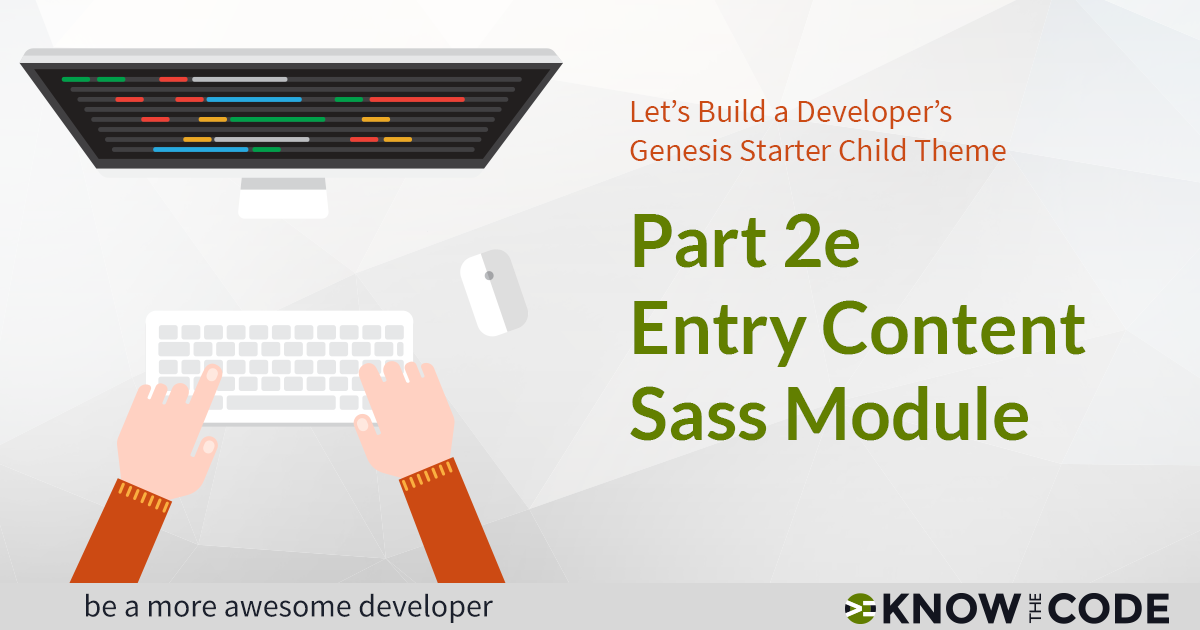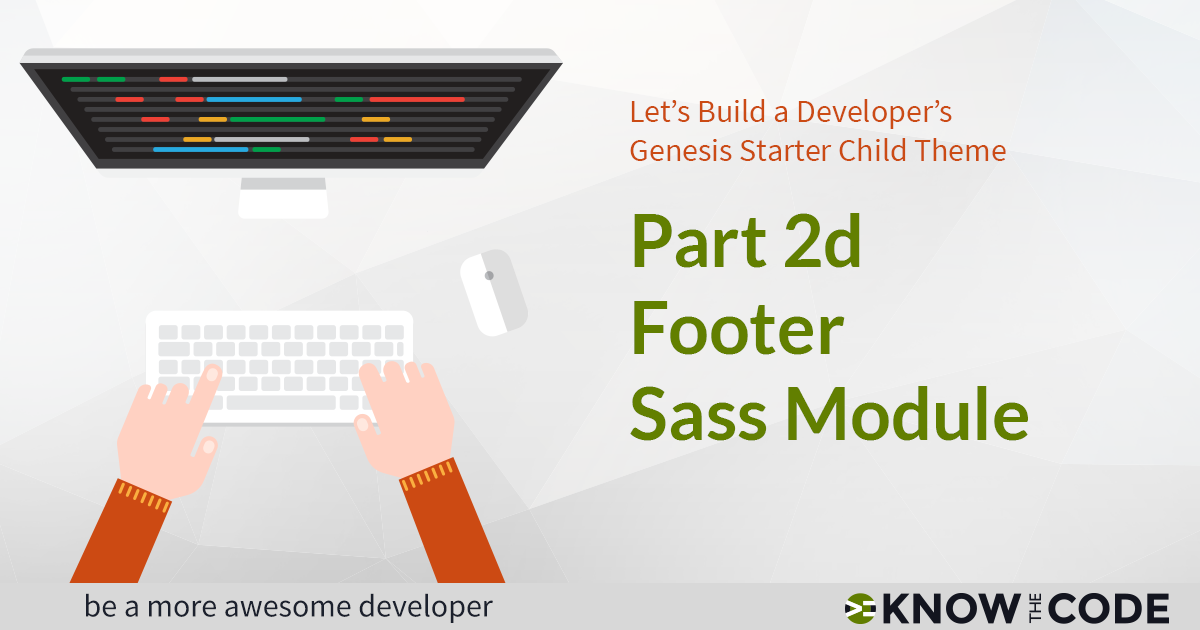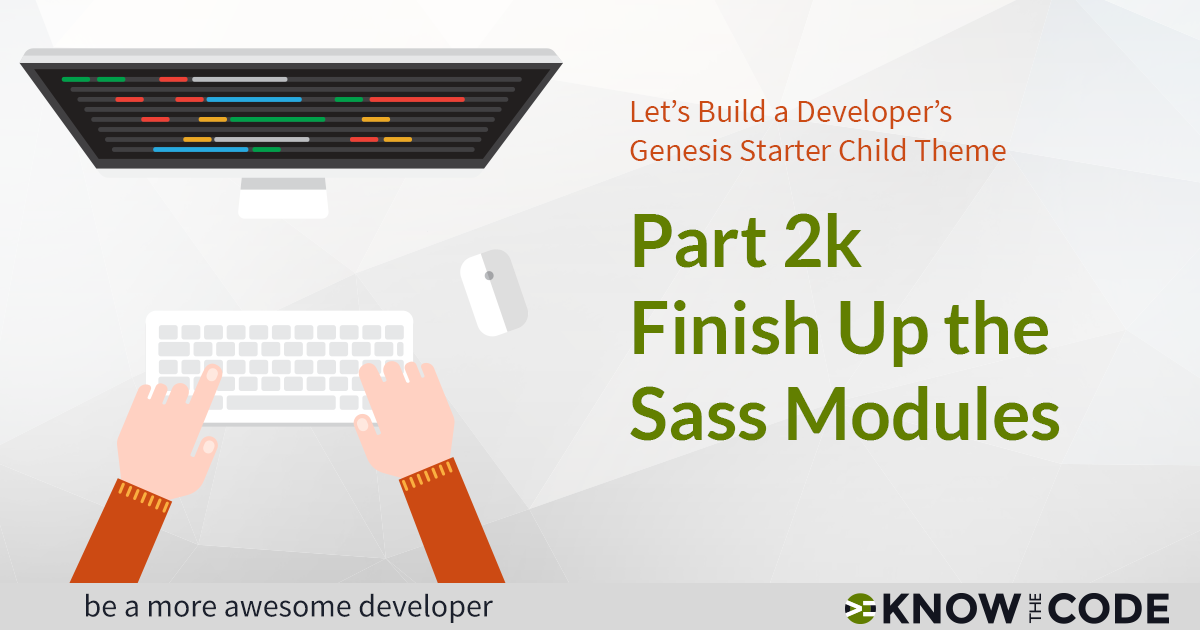In Part 2e, you will finalize the Entry Content Sass module, which includes the entry title, entry header, entry meta, entry content, and entry footer. You’ll think through all the components and then break up the partials to fit those components. You’ll migrate the media queries, refactor, identify and assign variables, and then refactor to remove redundancies and make it more readable. Then at the end, let’s setup the README and gitignore files and then commit the changes using git.




